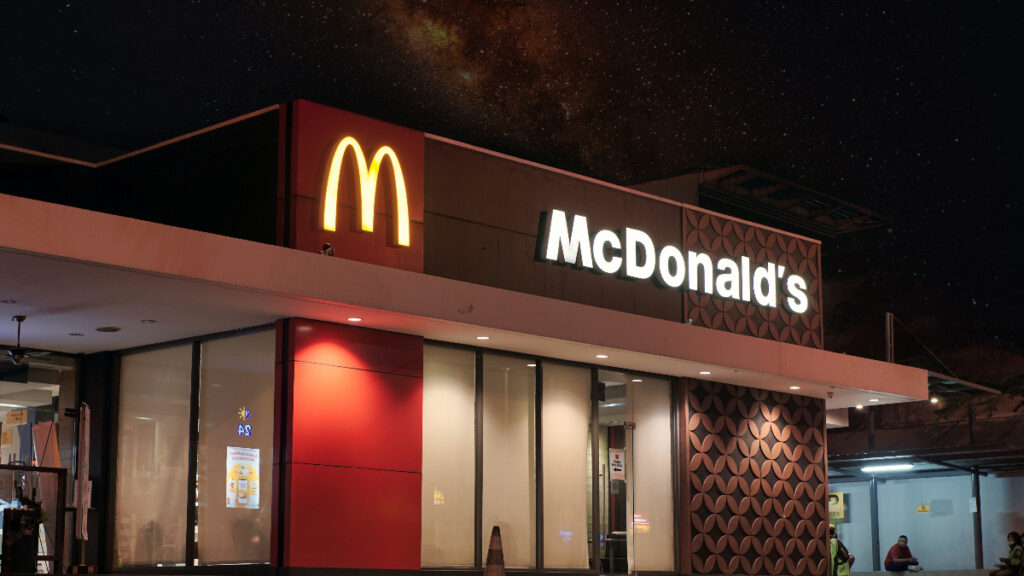McDonald’s, a global fast-food giant, is renowned for its affordability and convenience. However, the “cost” of McDonald’s extends beyond the price of a meal. This article delves into various aspects of McDonald’s cost, including menu prices, franchise investments, and the broader economic and social implications.

Content
1. Menu Prices
The cost of eating at McDonald’s varies significantly based on location, menu selection, and local economic conditions. Key factors influencing menu prices include:
- Geographical Location: Prices vary globally. In the U.S., for instance, a Big Mac costs around $5.66 on average, while in other countries, it can range from $4 to $6 or more.
- Local Economic Conditions: Minimum wage laws, rent, and ingredient costs affect menu prices. Higher operating costs in urban areas typically lead to higher menu prices.
- Special Deals and Promotions: McDonald’s frequently offers value deals, such as the $1, $2, $3 Dollar Menu in the U.S., providing affordable options for budget-conscious consumers.
2. Franchise Investment Costs
Owning a McDonald’s franchise is a significant financial commitment. Key investment costs include:
- Initial Investment: Starting a McDonald’s franchise requires an initial investment ranging from $1 million to $2.2 million, covering expenses like equipment, signage, and initial inventory.
- Franchise Fee: A one-time franchise fee of $45,000 is required to obtain a McDonald’s franchise.
- Ongoing Fees: Franchisees pay monthly fees, including a service fee of 4% of gross sales and rent, which varies based on the restaurant’s location.
3. Operational Costs
Running a McDonald’s restaurant involves various operational costs, such as:
- Labor Costs: With a large workforce, labor is a significant expense. Wages, benefits, and training programs contribute to this cost.
- Supply Chain Costs: McDonald’s relies on a vast network of suppliers for ingredients and packaging, which fluctuates based on commodity prices and logistical challenges.
- Maintenance and Utilities: Regular maintenance of equipment and utilities like electricity and water add to the operational expenses.
4. Economic Impact
McDonald’s plays a significant role in the global economy, influencing various sectors:
- Employment: As one of the largest employers globally, McDonald’s provides jobs for millions, impacting local economies and communities.
- Supply Chain: McDonald’s extensive supply chain supports numerous industries, from agriculture to transportation, contributing to economic growth.
5. Social and Environmental Costs
The broader costs associated with McDonald’s also include social and environmental considerations:
- Health Impacts: The affordability and ubiquity of McDonald’s have raised concerns about its role in the obesity epidemic and related health issues. High-calorie, high-fat menu items are often criticized for their nutritional content.
- Environmental Impact: McDonald’s environmental footprint includes waste generation, energy consumption, and greenhouse gas emissions. Efforts to mitigate these impacts include sustainable sourcing, waste reduction initiatives, and shifts towards more eco-friendly packaging.
Conclusion
The cost of McDonald’s encompasses more than just the price of a meal. From the financial commitments of franchisees to the broader economic, social, and environmental implications, understanding these costs provides a comprehensive view of what McDonald’s represents in today’s world. As McDonald’s continues to evolve, balancing affordability with sustainability and social responsibility remains a critical challenge and opportunity for the fast-food giant.

Kylie Davidson is a health blogger and the founder of her own blog about fitness. She has been blogging for three years now and loves to share what she learns with others. Kylie enjoys reading, cooking, and staying active outdoors.












